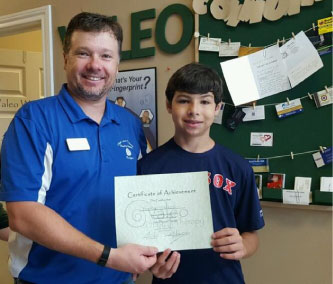New Advice For Treating Acute Injuries: Use POLICE!
FEBRUARY 11TH, 2018 KIM JACKSON
KIM’S KORNER
Some of you may have heard of rice as a treatment for your acute injuries. For years, doctors, physiotherapists, coaches and trainers have bellowed the word rice when you injure yourself but it isn’t only athletes who have been encouraged to use rice to treat acute injuries. For those of you who do not know, don’t go rushing to the cupboard to steal tomorrow’s dinner. RICE, as used by medical practitioners and trainers, is an acronym for rest, ice, compression and elevation.
Recently it became PRICE, with the letter P for protection.
It is impossible to totally prevent injuries. That’s why it is important to know
what to do when they occur.
The science behind the protocol was to manage the healing process. After an injury the body works hard to remove dead tissue and promote healing; it does this by increasing the fluid around the injury site. Unfortunately, the body is not perfect at regulating the amount of fluid and, at times, too much is present; this can actually slow down healing. The idea behind the protocol was to use interventions to speed up healing. Although reducing the amount of fluid is scientifically proven to aid recovery, the (P)RICE protocol has often been misinterpreted. After sustaining an injury, rest is recommended but complete rest may also contribute to slower healing times. Too much rest can lead to decreased flexibility and power as well as add to the accumulation of fluid. Moving and muscle activity can assist in reducing swelling because movement causes the muscles and soft tissues to act as a pump, assisting the movement of fluid around the body.
But now the experts have found a new and more effective formula: POLICE. This new regime helps to clear any confusion; it is clear and concise.
Protecting the injured area is, of course, important. During the first few days the area should be supported, whether by rest, applying a bandage, splint or sling, allowing movement within pain-free limits.
Optimal loading is the next stage. As pain allows, the joint or area must be moved, whether passively or actively. Optimal loading is the application of load to bone, muscle, tendon and/or ligament to maximise adaptation and promote strength and healing. It is important to remember that no movement should cause pain but, as recovery takes place and pain subsides, movement is vital to speed up healing and ensure that range and power are not lost. So, what exactly does this involve? Initially the movements will be small and possibly passive but, as recovery takes place, these exercises should be adapted to gradually add more force/strain to the area and soft tissue. When designing a programme it is best to get advice from a physiotherapist or sports trainer. How we load the tissues, and how often, will depend on the type and stage of your injury and your level of pain.
Ice was first used by the ancient Greeks to reduce inflammation, slow down circulation and reduce pain by decreasing the activity of pain receptors. In 1978 a Japanese doctor introduced whole body cryotherapy to treat patients with rheumatoid arthritis. He found that by rapidly cooling the surface of the skin, endorphins were released and joint pain and soreness were greatly reduced. Research has shown that ice is most effective in the first 48-72 hours. After that it may actually slow down the healing process. Ice should never be applied directly to the skin or for longer than 20 minutes, as it changes sensation and may lead to an ice burn, frostbite or nerve damage.
Compression by using an elastic bandage can help reduce swelling and also aids in protecting the joint but immobilizing the area. Ensure that the bandage is not applied so tightly as to compromise circulation or cause discomfort.
Elevation is another way to reduce swelling. Where possible, position the injured area so that it is above the heart. This aids circulation and the return of fluid from the area.
So the next time you have an injury, use POLICE.
But remember, if your injury is taking a long time to heal, and, in any case, before returning to your regular activities, visit your physiotherapist or health-care provider.
Kim Jackson is a UK-trained physiotherapist with over 20 years’ experience. She specializes in musculoskeletal pain and dysfunction, including back pain and sciatica, stroke and other neuro conditions plus sports physiotherapy, having worked with local, regional and international athletes and teams treating injuries and analyzing biomechanics to improve function and performance. She is registered with the Allied Health Council and is a member of PASL. She currently works at Bayside Therapy Services in Rodney Bay, www.baysidetherapyservices.com
Source: https://stluciastar.com/new-advice-treating-acute-injuries-use-police/
CLICK this link to Schedule a FREE Discovery Session to see if this is right for you!!
CLICK this link to try a TX DEMO if you know this is right for YOU!!

